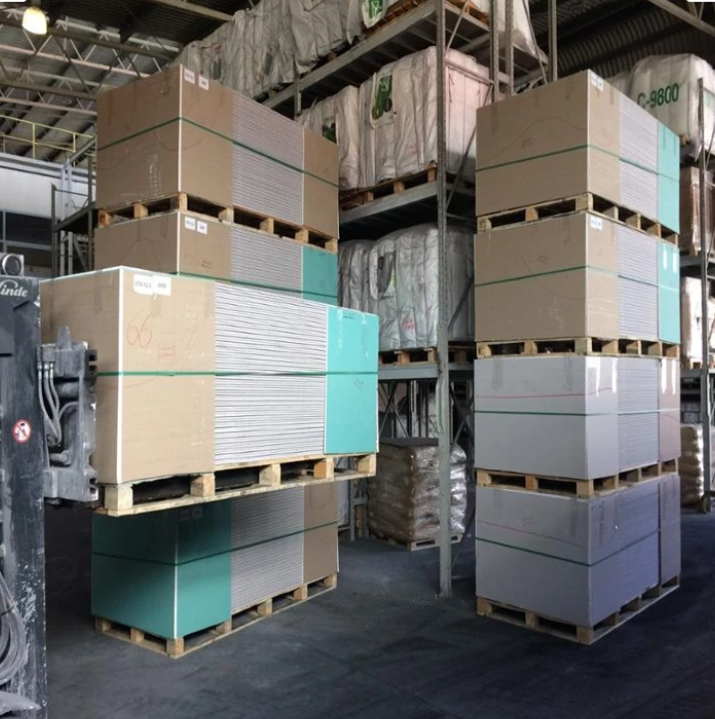In the world of construction and interior design, gypsum boards (commonly known as drywall or plasterboard) have become a go-to material for creating functional and aesthetically pleasing spaces. Whether you’re building a new home, renovating an office, or designing a commercial space, gypsum boards offer unmatched versatility, affordability, and ease of installation. This article dives into the benefits of gypsum boards, their role in drywall and ceiling projects, and practical tips for achieving professional results.
What Are Gypsum Boards?
Gypsum boards are panels made from calcium sulfate dihydrate (gypsum), often combined with additives to enhance specific properties like fire resistance or moisture resistance. Sandwiched between two layers of paper, these boards are lightweight yet durable, making them ideal for a wide range of construction applications.
- Why They Stand Out: Gypsum boards are fire-resistant, provide excellent sound insulation, and are easy to cut, shape, and install. They’re available in specialized variants, such as moisture-resistant boards for bathrooms or fire-resistant boards for safety-critical areas like kitchens.
- Sustainability Factor: Many gypsum boards incorporate recycled materials, making them an eco-friendly choice for environmentally conscious builders.
Applications in Drywall and Ceiling Installation
Gypsum boards are a cornerstone of modern construction, particularly for drywall and ceiling projects. Here’s how they shine:
- Drywall Construction: Gypsum boards are the backbone of interior walls and partitions. Their smooth surface is perfect for painting, wallpapering, or applying decorative finishes. Unlike traditional plaster, drywall installation is faster and less labor-intensive, saving time and costs. For example, a skilled team can complete a drywall partition in a fraction of the time it takes to plaster a wall.
- Ceiling Designs: Gypsum boards are widely used for creating flat or decorative ceilings. Their flexibility allows for intricate designs, such as recessed lighting pockets or curved patterns, adding elegance to homes and offices. For high-humidity areas, moisture-resistant gypsum boards are recommended to prevent warping or mold growth.
- Versatile Uses: Beyond walls and ceilings, gypsum boards are used in false ceilings, acoustic panels, and even as a base for tiles in certain applications.
Benefits of Using Gypsum Boards
- Ease of Installation: Gypsum boards are lightweight and can be cut with standard tools, making them a favorite among contractors. A sturdy framework, such as light steel or wooden dragonbones, ensures stability during installation.
- Cost-Effective: Compared to traditional materials like brick or plaster, gypsum boards are more affordable, reducing overall project costs without compromising quality.
- Fire and Sound Insulation: Fire-resistant gypsum boards can slow the spread of flames, enhancing safety in buildings. Thicker boards or double-layer installations also improve soundproofing, ideal for urban homes or offices.
- Customizability: Available in various thicknesses and types, gypsum boards cater to diverse needs, from standard interior walls to specialized applications like soundproof studios.
Tips for Successful Gypsum Board Installation
To maximize the benefits of gypsum boards in your drywall or ceiling projects, follow these practical tips:
- Choose the Right Type: Select the appropriate gypsum board for your environment. For instance, use moisture-resistant boards in bathrooms or basements and fire-resistant boards in areas requiring enhanced safety.
- Ensure a Strong Framework: A robust framework, such as light steel dragonbones, is critical for long-term durability. Avoid cutting corners on materials like wooden吊筋 (ceiling hangers), as insufficient support can lead to sagging or cracks.
- Seal Joints Properly: Use gypsum powder and anti-crack tape to seal seams between boards. This prevents cracks caused by temperature changes or structural settling.
- Use Quality Fasteners: Opt for rust-resistant drywall nails or screws to ensure longevity, especially in humid climates.
- Hire Skilled Professionals: While gypsum boards are easy to work with, improper installation can lead to issues like uneven surfaces or weak structures. Experienced contractors can ensure a flawless finish.
Why Gypsum Boards Are a Smart Choice
Gypsum boards are a game-changer for modern construction, offering a perfect blend of functionality, aesthetics, and affordability. Their versatility makes them suitable for everything from simple home renovations to complex commercial projects. Plus, their eco-friendly properties align with the growing demand for sustainable building materials.
Whether you’re planning a drywall partition or a stunning ceiling design, gypsum boards provide the flexibility and performance needed to bring your vision to life. By choosing the right type and following best installation practices, you can achieve professional results that stand the test of time.
Ready to transform your space with gypsum boards? Share your project ideas in the comments or explore our blog for more construction tips and inspiration!
